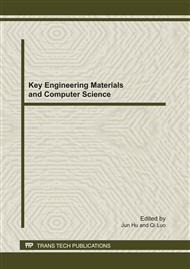p.92
p.97
p.103
p.108
p.112
p.118
p.124
p.130
p.135
Research on Preparation and Hydrolysis Resistance of Poly(lactic acid) Modified by MDI
Abstract:
The poly(lactic acid) (PLA) was modified by 4,4'-diphenylmethane diisocyanate (MDI) successfully prepared to improve the stability of PLA. The MDI and the hydroxyl terminated PLA could form PLA modified by MDI (MDI-PLA) via addition reaction. The structure of MDI-PLA was confirmed by FTIR and its degradation properties were investigated. The results showed that the pH of the aqueous media and the ion strength together played an important role in the degradation behavior of the PLA and MDI-PLA. Both of the PLA and MDI-PLA had the highest degradation rate in 0.01 M NaOH. It offers the best stability to hydrolysis resistance by adding the 0.6 wt% of MDI to the PLA materials,and have a more stable of 15 times than unmodified PLA.
Info:
Periodical:
Pages:
112-117
Citation:
Online since:
August 2011
Authors:
Price:
Сopyright:
© 2011 Trans Tech Publications Ltd. All Rights Reserved
Share:
Citation:


